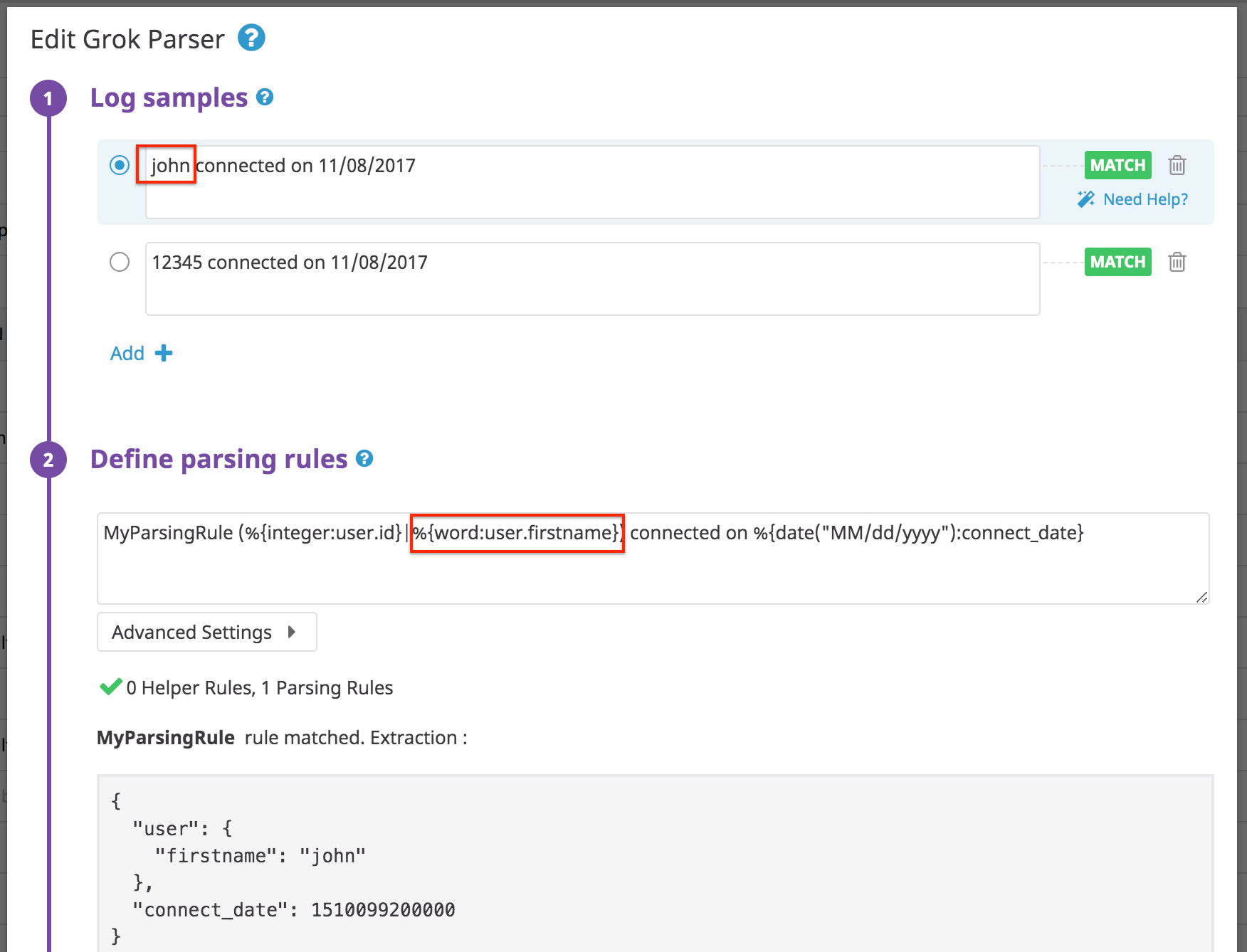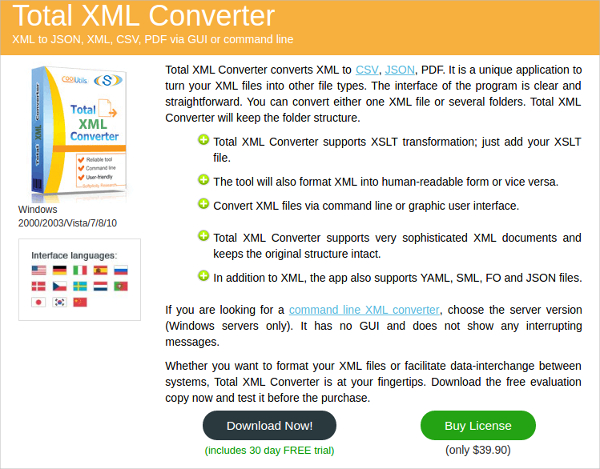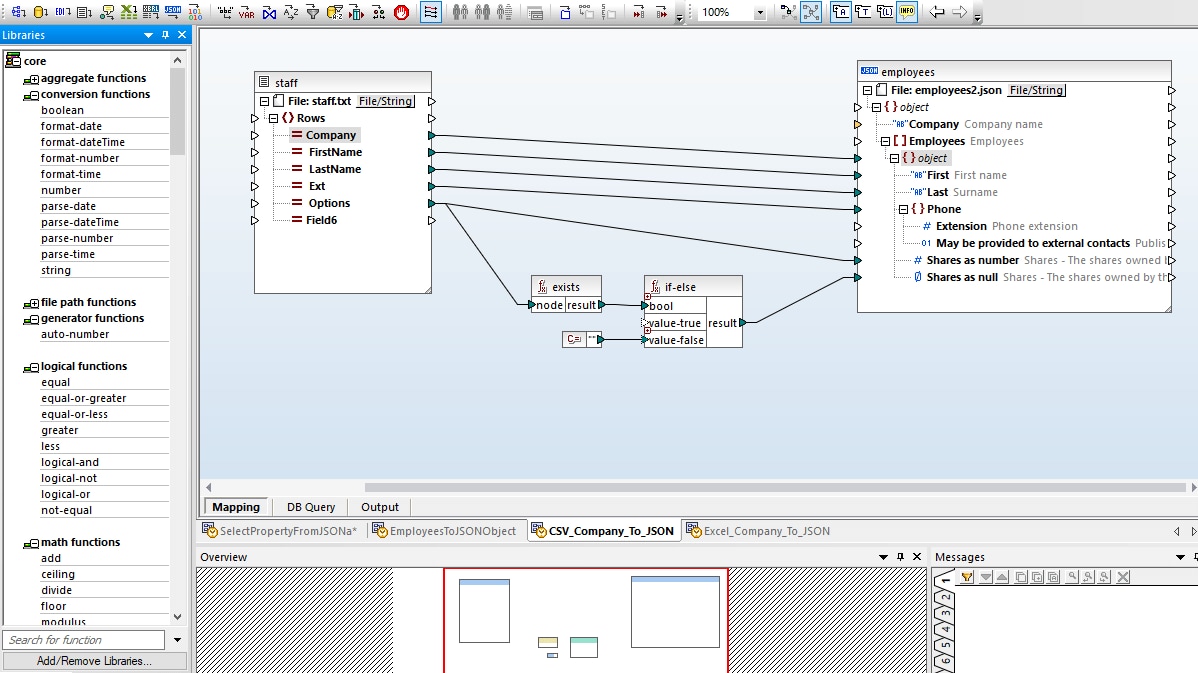Xml Convert Json Java Free Download For Mac
JSON to XML is very unique tool for convert JOSN to XML and allows to download, save, share and print JSON to XML data. The only problem with JSON in Java is that if your XML has a single child, but is an array, it will convert it to an object instead of an array. This can cause problems if you dynamically always convert from XML to JSON, where if your example XML has only one element, you return an object, but if it has 2+, you return an array, which can cause parsing issues for people using the JSON. Xml Converter free download - XML Viewer, XML Converter Standard Edition, DriveImage XML, and many more programs.


Only more than a decade later (1998) SGML's offspring XML took centre stage. With broad support for schemas, transformation and tooling the de facto standard for application neutral (almost) human readable data formats was established - and the world was good.
But bracket phobia and a heavy toll, especially on browsers, for processing led to to rise of JSON (starting ca. 2002), which rapidly became the standard for browser-server communication. It it native to JavaScript, very light compared to XML and fast to process. However it lacks (as time of writing) support for an approved schema and transformation language (like XSLT).
This leads to the common scenario that you need both: XML for server to server communication and JSON for in-process and browser to server communication. While they look very similar, XML and JSON are different enough to make transition difficult. XML knows elements and attributes, while JSON only knows key/value pairs. A JSON snippet like this:
can be expressed in XML in various ways:
.or.
.or.
(and many others) The JSON object doesn't need a 'root name', the XML does. The other way around is easier: each attribute simply becomes a key/value pair. Some XML purist see attributes as evil, I think they do have their place to make relations clearer (is-a vs. has-a) and XML less verbose. So transforming back and forth between XML and JSON needs a 'neutral' format. In my XML Session at Entwicklercamp 2014 I demoed how to use a Java class as this neutral format. With the help of the right libraries, that's flexible and efficient.Using my favorite fruit class as an example, the solution is easy to comprehend:
Xml Convert Json Java Free Download For Macbook
The trick here is to use JAXB and Google GSON to make your life easier. Lets have a closer look:

Under the hood both GSON and JAXB use reflection to turn a class into JSON/XML and back. Annotations are added in front of the class or method and need to be defined in a package like any other Java source construct. By default GSON doesn't use any annotations, but in the package
com.google.gson.annotations. There are just 4 of them: 
@SerializedName('someName'): Sets the name to be used when creating the JSON, the defaults are set in thecom.google.gson.FieldNamingPolicyenumeration@Since(1.0)and@Until(2.1): Define the validity of the JSON element. To activate that you need to setGsonBuiler.setVersion(double), otherwise all items are processes@Exposeor@Expose (serialize = false, deserialize = false): You need to setGsonBuilder().excludeFieldsWithoutExposeAnnotation()to activate. Once done only fields with a Expose annotation will show up unless the annotation has the serialize/deserialize set to false
 Notably absent is a possibility to set a 'root name'. This isn't surprising, since JSON usually just starts/ends with { } and doesn't use a root name.
Notably absent is a possibility to set a 'root name'. This isn't surprising, since JSON usually just starts/ends with { } and doesn't use a root name. The annotations in JAXB are much more complex, reflecting the extended possibilities of XML structure using Elements and Attributes. The annotations can be found in the
javax.xml.bind.annotation name space and are part of core Java. Some of the interesting annotations: @XmlRootElement(name = 'FruitBasket'): Defines the root name of your XML, used as class name annotation@XmlElement(name = 'Fruit'): Sets the name of a variable to be serialized as XML Element. Can contain anamespace='someuri'definition@XmlAttribute(name='id'): defines a variable to be saved as XML Attribute@XmlTransient: Ignore this variable (as variables defined as transient are also ignored)@XmlAccessorType(XmlAccessType): Defines what parts of the class get serialized. By default all fields and properties. This can lead to duplication sinceString blaandString getBla()would result in the same XML Element. The options areXmlAccessType.FIELD: Only fields, but no properties (getSomething()) are serializedXmlAccessType.NONE: Only properties and fields that have explicit annotations get serializedXmlAccessType.PROPERTY: Properties are serialized. I got errors if I had fields with the same name as properties, so I'm not sure how useful that isXmlAccessType.PUBLIC_MEMBER: Only fields and properties that are publicly visible get serialized, so no inner workings of the class gets exposed
@XmlSchema: Defines the schema and namespace for a package to be used in a class. Goes into the package-info.java file (an unsung hero of the Java package system).
My take: JAXB allows fine-tuning, complexity, covering any thinkable use case. I would keep that in the back of my mind, locked away and keep it simple. The most likely case that you might need this fancy features is when you are given an existing schema you can't tweak for simplicity.
As usual: YMMV
Posted by Stephan H Wissel on 12 July 2014|Comments (1)|categories: Software
Json File To Xml
This online tool allows you to convert an XML file into a JSON file. This process is not 100% accurate in that XML uses different item types that do not have an equivalent JSON representation.
The following rules will be applied during the conversion process:
- Attributes will be treated as regular JSON properties
- Attributes MAY be prefixed with a string to differentiate them from regular XML elements
- Sequences of two or more similar elements will be converted to a JSON array
- Namespaces are completely omitted from the resulting property names
- You can add an attribute with name _type to element to infer the json type (boolean, float, integer, number, string)
- Terminal #text item types will be converted into a JSON property with the name #text. This can be changed in the options.
*The maximum size limit for file upload is 2 megabytes. All files bigger than 1 megabyte will be formatted to a new window for performance reason and to prevent your browser from being unresponsive.
